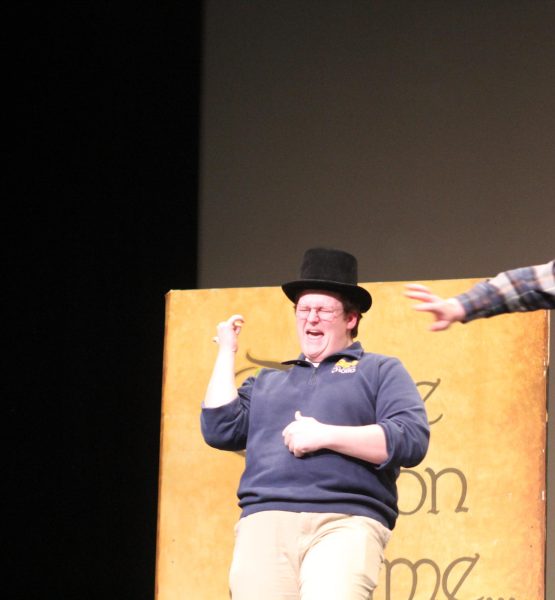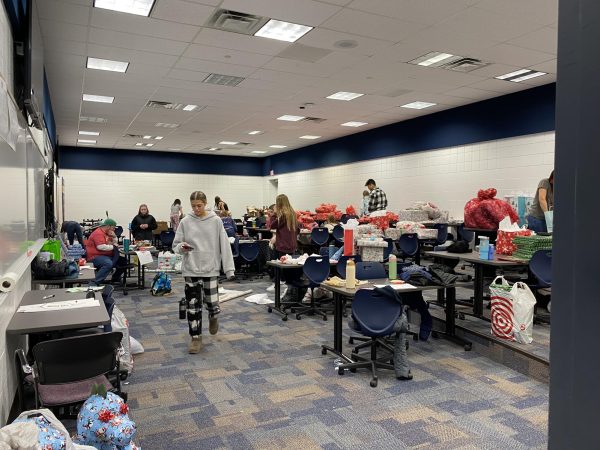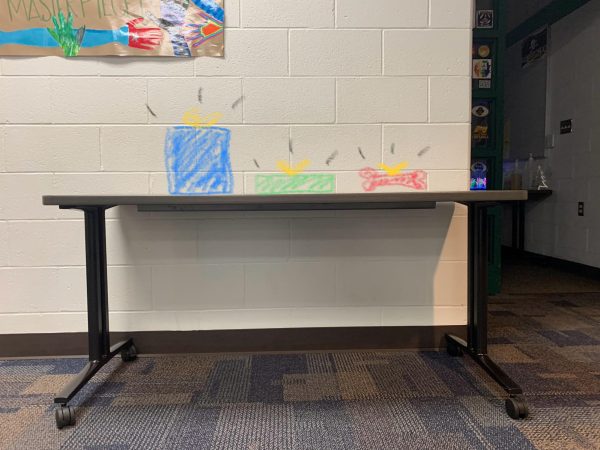Klinger launches yearly extra credit project
Freshman Grant Taylor climbs on top of the trailer holding the trebuchet he made with his dad. “After doing the project and seeing how everything worked, it was weird how it actually works,” Taylor said. “Like actually being able to see it throw over and see the counterweight active and see how it drags.”
December 14, 2019
World history teacher Jason Klinger recently assigned his students his yearly, unique extra credit project: to build a replica of a trebuchet.
A trebuchet is a counterweight catapult machine previously used as a weapon in medieval warfare.
Klinger gave them the opportunity to build a trebuchet that fulfills one of two standards: where it throws a 1 pound weight 20 feet and the other where it can throw a 5 pound weight 100 feet. The smaller is worth 25 points of extra credit while the larger is worth 40 points.
He says only a handful of students attempt this project every year, but it helps them engage with the material he’s teaching in class.
“The benefit is that it improves their engagement with it because they can start to understand a little better what the medieval world was like, like they understand just how complicated it is to make this even with modern technology and websites to help,” Klinger said. “So they think about, ‘well, how could they have done this 600 years ago?’”
Two of Klinger’s students attempted to build the larger trebuchet, freshmen Kolby Bretz and Grant Taylor.
The benefit is that it improves their engagement with it because they can start to understand a little better what the medieval world was like. — World history teacher Jason Klinger
“One of the things I like about it is that you sometimes get kids who do it who wouldn’t necessarily do other forms of extra credit,” Klinger said. “So, it’s something for kids who like doing something with their hands, or some of them just use it as a bonding experience with their parents because their parents usually help them with it.”
Bretz built the trebuchet with his dad’s help.
“So my dad builds stuff,” Bretz said. “He has a lot of machines and stuff and I learned how to use a lot. I learned a lot of skills.”
He spent about two days over the weekend building and testing his machine. He followed a template he found online and dealt with some technical issues, but managed to launch a rock the correct distance when he presented to Klinger.
“It wasn’t easy,” Bretz said. “There was a lot of failed attempts … but it was fun.”
Taylor also worked with his dad, analyzing photos and videos of how trebuchets work to figure out how to put his together.
“After doing the project and seeing how everything worked, it was weird how it actually works,” Taylor said. “Like actually being able to see it throw over and see the counterweight active and see how it drags.”
He worked on the trebuchet for about four days and had to make adjustments for it to work correctly.
“The day before we went out and tested it, it didn’t really work the best so we added more weight and that helped,” Taylor said. “When we saw it actually went really far it kind of surprised me.”
Klinger was impressed by both of their projects.
“It was just amazing to see them because they were both throwing well over 100 feet and doing it consistently which is impressive,” Klinger said.













Connie VanSchelven • Dec 14, 2019 at 7:25 pm
You rock, Jason!